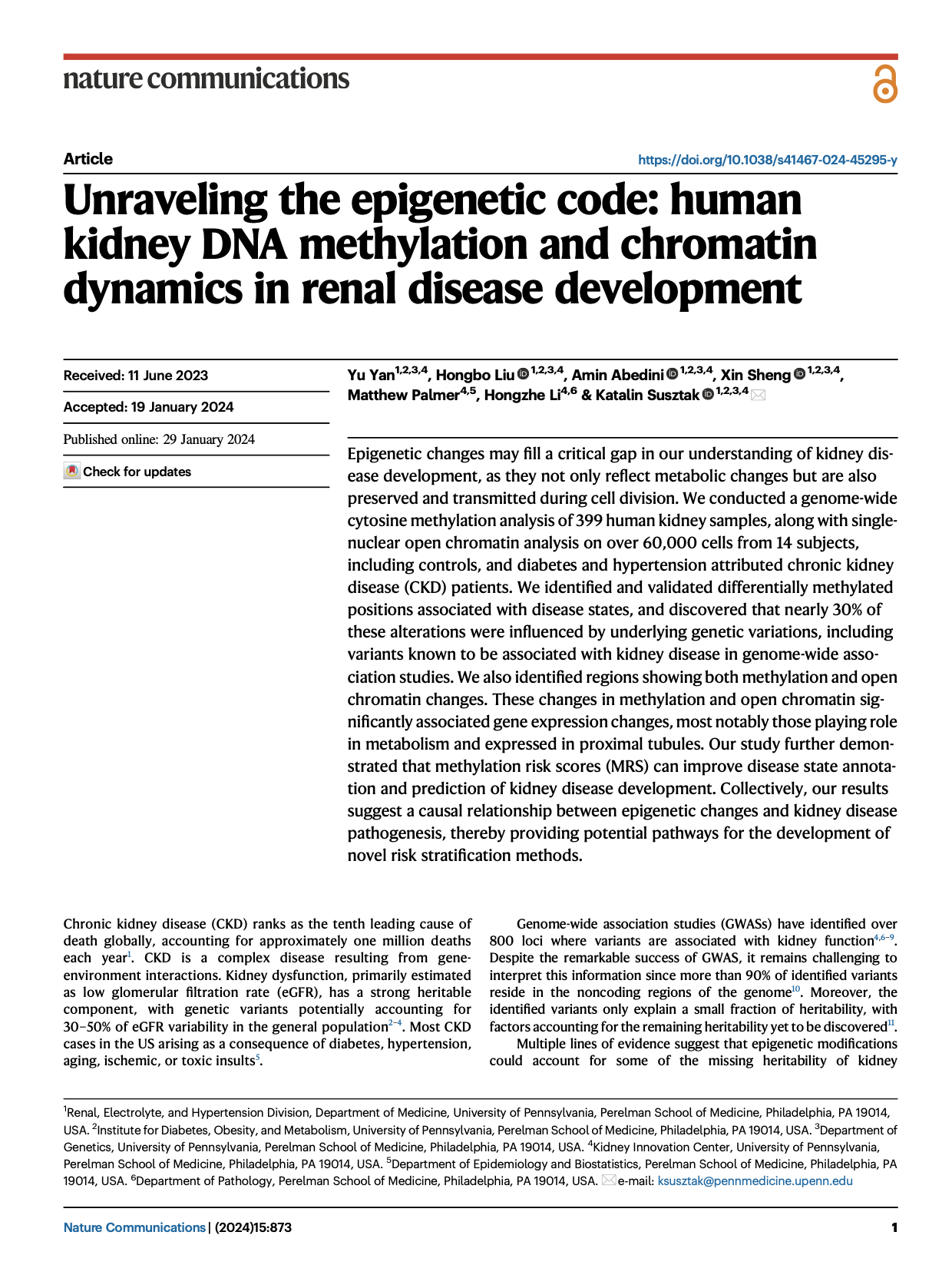Selected Publications
(*Contributed equally; ✉Corresponding author)
 |
Kidney multiome-based genetic scorecard reveals convergent coding and regulatory variants. |
|
 |
Epigenomic and transcriptomic analyses define core cell types, genes and targetable mechanisms for kidney disease. |
|
 |
Dnmt3a and Dnmt3b-Decommissioned Fetal Enhancers are Linked to Kidney Disease. |
|
 |
The MS-lincRNA landscape reveals a novel lincRNA BCLIN25 that contributes to tumorigenesis by upregulating ERBB2 expression via epigenetic modification and RNA–RNA interactions in breast cancer. |
|
 |
DiseaseMeth version 2.0: a major expansion and update of the human disease methylation database. |
|
 |
Systematic identification and annotation of human methylation marks based on bisulfite sequencing methylomes reveals distinct roles of cell type-specific hypomethylation in the regulation of cell identity genes. |
|
 |
SEA: a super-enhancer archive. |
|
 |
Long non-coding RNA identification over mouse brain development by integrative modeling of chromatin and genomic features. |
|
 |
DiseaseMeth: a human disease methylation database. |
|
 |
QDMR: a quantitative method for identification of differentially methylated regions by entropy. |
|
 |
HHMD: the human histone modification database. |
|
 |
Human genetics identify convergent signals in mitochondrial LACTB-mediated lipid metabolism in cardiovascular-kidney-metabolic syndrome. |
|
 |
TET2 germline variants promote kidney disease by impairing DNA repair and activating cytosolic nucleotide sensors. |
|
 |
Unraveling the epigenetic code: human kidney DNA methylation and chromatin dynamics in renal disease development. |
|
 |
Transcriptome-and proteome-wide association studies nominate determinants of kidney function and damage. |
|
 |
DNA methylation markers for kidney function and progression of diabetic kidney disease. |
|
 |
Systematic integrated analysis of genetic and epigenetic variation in diabetic kidney disease. |
|
 |
Renal Histologic Analysis Provides Complementary Information to Kidney Function Measurement for Patients with Early Diabetic or Hypertensive Disease. |
|
 |
Single cell regulatory landscape of the mouse kidney highlights cellular differentiation programs and disease targets. |
|
 |
Mapping the genetic architecture of human traits to cell types in the kidney identifies mechanisms of disease and potential treatments. |
|